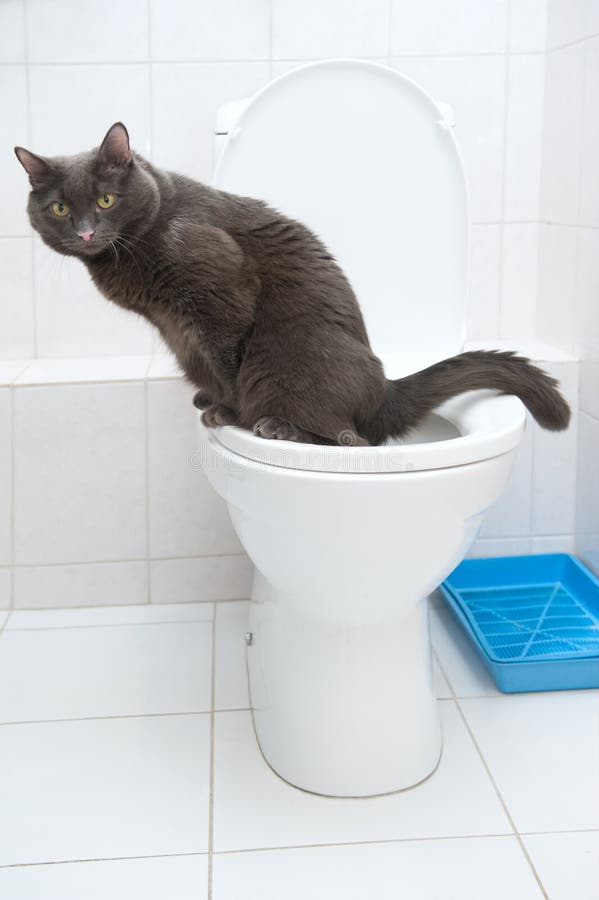Avoid Flush Cat Poop Down Your Toilet - Preserve Your Home's Plumbing Integrity
Avoid Flush Cat Poop Down Your Toilet - Preserve Your Home's Plumbing Integrity
Blog Article
Nearly everybody will have their own piece of advice involving How to Dispose of Cat Poop and Litter Without Plastic Bags.

Intro
As cat owners, it's important to bear in mind just how we get rid of our feline good friends' waste. While it might seem convenient to flush pet cat poop down the toilet, this practice can have harmful consequences for both the atmosphere and human health and wellness.
Ecological Impact
Purging pet cat poop presents harmful virus and parasites into the water supply, posing a significant threat to marine ecological communities. These contaminants can negatively influence aquatic life and compromise water quality.
Health Risks
In addition to environmental concerns, flushing feline waste can likewise position wellness threats to human beings. Feline feces might include Toxoplasma gondii, a parasite that can cause toxoplasmosis-- a potentially severe ailment, specifically for expecting women and individuals with damaged body immune systems.
Alternatives to Flushing
Thankfully, there are more secure and extra accountable ways to dispose of feline poop. Consider the adhering to options:
1. Scoop and Dispose in Trash
The most usual method of throwing away pet cat poop is to scoop it into an eco-friendly bag and toss it in the trash. Make certain to utilize a devoted trash scoop and deal with the waste promptly.
2. Usage Biodegradable Litter
Select naturally degradable cat clutter made from materials such as corn or wheat. These litters are environmentally friendly and can be safely dealt with in the garbage.
3. Bury in the Yard
If you have a backyard, think about burying feline waste in a designated location away from vegetable yards and water sources. Make certain to dig deep adequate to avoid contamination of groundwater.
4. Mount a Pet Waste Disposal System
Purchase a pet garbage disposal system specifically created for cat waste. These systems use enzymes to break down the waste, lowering odor and ecological impact.
Final thought
Liable pet ownership expands past giving food and sanctuary-- it also includes correct waste management. By refraining from purging cat poop down the toilet and selecting different disposal methods, we can reduce our ecological footprint and secure human wellness.
Why Can’t I Flush Cat Poop?
It Spreads a Parasite
Cats are frequently infected with a parasite called toxoplasma gondii. The parasite causes an infection called toxoplasmosis. It is usually harmless to cats. The parasite only uses cat poop as a host for its eggs. Otherwise, the cat’s immune system usually keeps the infection at low enough levels to maintain its own health. But it does not stop the develop of eggs. These eggs are tiny and surprisingly tough. They may survive for a year before they begin to grow. But that’s the problem.
Our wastewater system is not designed to deal with toxoplasmosis eggs. Instead, most eggs will flush from your toilet into sewers and wastewater management plants. After the sewage is treated for many other harmful things in it, it is typically released into local rivers, lakes, or oceans. Here, the toxoplasmosis eggs can find new hosts, including starfish, crabs, otters, and many other wildlife. For many, this is a significant risk to their health. Toxoplasmosis can also end up infecting water sources that are important for agriculture, which means our deer, pigs, and sheep can get infected too.
Is There Risk to Humans?
There can be a risk to human life from flushing cat poop down the toilet. If you do so, the parasites from your cat’s poop can end up in shellfish, game animals, or livestock. If this meat is then served raw or undercooked, the people who eat it can get sick.
In fact, according to the CDC, 40 million people in the United States are infected with toxoplasma gondii. They get it from exposure to infected seafood, or from some kind of cat poop contamination, like drinking from a stream that is contaminated or touching anything that has come into contact with cat poop. That includes just cleaning a cat litter box.
Most people who get infected with these parasites will not develop any symptoms. However, for pregnant women or for those with compromised immune systems, the parasite can cause severe health problems.
How to Handle Cat Poop
The best way to handle cat poop is actually to clean the box more often. The eggs that the parasite sheds will not become active until one to five days after the cat poops. That means that if you clean daily, you’re much less likely to come into direct contact with infectious eggs.
That said, always dispose of cat poop in the garbage and not down the toilet. Wash your hands before and after you clean the litter box, and bring the bag of poop right outside to your garbage bins.
https://trenchlesssolutionsusa.com/why-cant-i-flush-cat-poop/

Do you enjoy more info about Don’t flush cat feces down the toilet? Leave a review down below. We would be pleased to find out your opinions about this blog posting. Hoping to see you back again soon. If you enjoyed our blog post plz don't forget to pass it around. I appreciate reading our article about How to Dispose of Cat Poop and Litter Without Plastic Bags.
Book Now Report this page